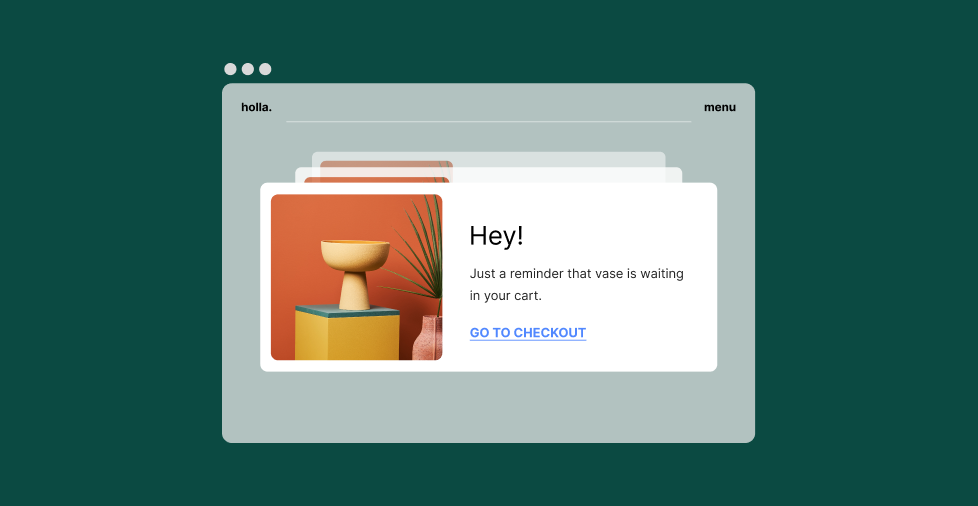Key takeaways:
- Most cart abandonment occurs due to preventable issues, such as surprise costs, forced account creation, or a complicated checkout.
- Improving cost transparency, offering guest checkout, and speeding up the process can help more customers complete their purchases.
- Simple changes in user experience can make a big difference—no full redesign is needed to boost conversions.
Cart abandonment is one of the biggest challenges in eCommerce. According to the Baymard Institute, the average cart abandonment rate is 70.19%. That means most shoppers leave without completing their purchase, resulting in lost revenue and missed opportunities.
So why does it happen? And what can you do about it?
This simplified guide will explore the most common reasons behind cart abandonment and how to fix them. Often, it comes down to small but important details like your checkout flow, trust signals, or how you display shipping costs. Improving just a few of these areas can make a noticeable difference.
9 common reasons customers abandon carts and how to prevent them
A specific reason usually causes them to pause or back out before completing a purchase. From hidden fees to a confusing checkout experience, these issues tend to appear across online stores of all sizes.
Based on industry data, user research, and real-world testing, these patterns repeatedly appear in customer behavior. More importantly, we’ve included actionable tips to help you address each.
Here are the top nine reasons shoppers abandon their carts:
- Unexpected costs at checkout
- Forced account creation
- Complicated or lengthy checkout process
- Concerns about security and trust
- Limited payment options
- Slow website or performance issues
- Long delivery times or lack of shipping info
- Poor or unclear return policies
- Window shopping and price comparison
We’ll break each one down below and explain how to fix them in ways that keep your shoppers moving forward.
Unexpected costs at checkout
These are fees like shipping, taxes, or handling charges that appear late in the checkout process and weren’t shown upfront.
Why does it happen:
When customers reach the final step and see a higher total than expected, they often leave the site without completing the purchase. Nearly 48% of shoppers abandon their carts due to extra costs that weren’t clearly explained upfront.
How to prevent it:
Show total costs as early as possible. Disclose shipping estimates on product pages, display taxes in the cart, and offer flat rates or free shipping above a certain order value.
Forced account creation
This happens when shoppers must create an account before they can finish checking out.
Why does it happen:
Not everyone wants to register right away. Many first-time customers prefer a quick and simple checkout experience. In fact, nearly 25% of U.S. consumers abandon their carts because the website requires them to create an account.
How to prevent it:
Offer a guest checkout option. You can ask customers to create an account after the purchase, once they’ve completed their order without any delays.
Complicated or lengthy checkout process
A complicated checkout process with multiple steps, repetitive fields, or unclear instructions slows down the customer journey and causes frustration. Around 88% of online shoppers have abandoned a cart, with a complex or time-consuming checkout experience being a key reason.
Why does it happen:
Shoppers lose patience when the process feels tedious or confusing. Too many steps, poor layout, lack of clarity, and weak call-to-action (CTA) buttons can quickly lead to frustration. When customers can’t identify the next step, they’re more likely to abandon their carts.
How to prevent it:
Make checkout as quick and clear as possible. Remove unnecessary fields, group related information together, and use visual cues like progress bars to guide customers. Autofill and address validation can also make the process feel smoother and more intuitive.
Additionally, compelling CTA buttons with phrases like “Complete Order” and “Place Order.” They tell customers what to do next; reducing confusion and decision fatigue.
Concerns about security and trust
This refers to a shopper’s hesitation to enter sensitive details like credit card information when a website doesn’t feel trustworthy. Missing security indicators, vague policies, or a lack of social proof can all raise red flags.
Why does it happen:
If your checkout doesn’t clearly communicate that it’s secure, customers may worry their information isn’t safe. Sites that don’t look professional or fail to show visible trust elements often lose sales at the final step.
How to prevent it:
Add SSL certificates and display the security badge near the payment fields. Include clear return and refund policies and highlight customer reviews or trust seals. These small elements build credibility and give shoppers confidence to complete their purchase.
Limited payment options
Limited payment options can stop customers from completing a purchase when their preferred method— such as digital wallets, local currency, or installment plans —is unavailable. 87% of consumers say they would abandon a purchase if their preferred payment method were offered, which directly affects conversion rates.
Why does it happen:
Different shoppers use different methods depending on their location, device, or personal preferences. If the site only offers one or two basic methods, such as credit card only, many customers may leave and try buying from a competitor with more flexibility.
How to prevent it:
Accept a range of options including debit and credit cards, digital wallets like PayPal or Apple Pay, and buy now, pay later solutions. If your store serves international customers, make sure your payment processor supports global currencies and region-specific methods.
Slow website or performance issues
Delays in page loading, unresponsive buttons, broken links, or checkout crashes can disrupt the user experience and lead to lost sales. eCommerce sites that load in one second see conversion rates of up to 3.05%, while those that take four seconds drop to just 0.67%—a decline of roughly 0.3% for every additional second.
Why does it happen:
Shoppers expect speed and reliability, especially during checkout. If pages take too long to load or the site freezes when they try to move forward, customers are more likely to give up and leave the site. Even small delays can create doubt or frustration.
How to prevent it:
Regularly test your checkout on both desktop and mobile. Optimize images (compress images, write alt text, create image sitemap), remove unused scripts, and use reliable hosting to reduce load times. Make sure the experience is smooth across all devices to avoid losing buyers at the finish line.
Long delivery times or lack of shipping info
This refers to situations where customers can’t see when their order will arrive, or the estimated delivery time is beyond a set timeline. It creates uncertainty about the purchase and makes the buying experience feel incomplete.
Why does it happen:
Shoppers often want their items quickly, especially for time-sensitive needs. If your site doesn’t provide delivery details during checkout, or only shows vague timeframes like “standard shipping,” it can lead to hesitation or abandonment.
How to prevent it:
Share clear delivery estimates based on location. Offer express shipping options when possible, and mention expected arrival dates during checkout. Setting the right expectations can reduce doubt and help customers feel more confident about ordering.
Poor or unclear return policies
This happens when shoppers can’t easily find or understand your return or refund policy. Unclear terms create a sense of risk, especially for first-time buyers.
Why does it happen:
People want to know if they can return or exchange an item if it doesn’t meet their expectations. If your policy is hidden in the fine print or filled with confusing terms, customers may decide not to take the chance.
How to prevent it:
Make your return policy easy to find and explain it in simple language. Include key points like time limits, conditions, and how refunds are processed. Reassuring shoppers that returns are straightforward can help close more sales.
Window shopping and price comparison
Some customers use their cart to save items for later or compare prices between stores. This behavior is common during the research stage, especially for higher-priced or non-urgent purchases.
Why does it happen:
Not every shopper is ready to buy right away. They may be browsing, building a wishlist, or looking for better deals. If there’s no urgency or follow-up, the cart is often left behind.
How to prevent it:
Add cart reminders or follow-up emails for users who leave items behind. Offer wishlist features or save-for-later options so they can return when ready. You can also test limited time offers or personalized discounts to give shoppers a reason to act sooner.
Build a better shopping experience with Network Solutions
Cart abandonment usually happens because of small issues that get in the way like surprise fees, required sign-ups or a slow checkout. The upside is that most of these problems are easy to fix with clear messaging and a smoother experience that helps customers complete their purchase.
And that’s where the right tools make all the difference.
Network Solutions offers tools and services to help you create a smooth, secure, and professional online store. From eCommerce website builders to hosting and support, everything is designed to help you convert more visitors into buyers.
If you’re looking for a robust security solution, our SiteLock is a worthwhile option since it performs daily malware scanning and removal, protects against viruses, and speeds up your site. It’s a cutting-edge tool that creates a secure and professional eCommerce store.
Turn more carts into successful sales today.
Frequently asked questions
It usually comes down to friction in the checkout process. Unexpected costs, required sign-ups, or pages that feel too slow or confusing can break the flow. When you analyze user behavior, you’ll often find that these small frustrations disrupt the overall online shopping experience. Some customers also get distracted or leave to compare prices.
There are many factors. Hidden fees, limited payment options, or poor mobile performance can frustrate buyers during the checkout process. A lack of trust signals or missing delivery details also play a role. The best way to fix shopping cart abandonment is to analyze user behavior and improve the overall online shopping experience with a smoother, faster path to checkout.
It’s very common. Studies show that around 70% of online shopping carts are abandoned before the checkout process is completed.
Many customers leave due to cost concerns, performance issues, or a checkout process that feels untrustworthy. Others just aren’t ready to buy. Understanding what’s happening in these moments is key to reducing drop-off.




